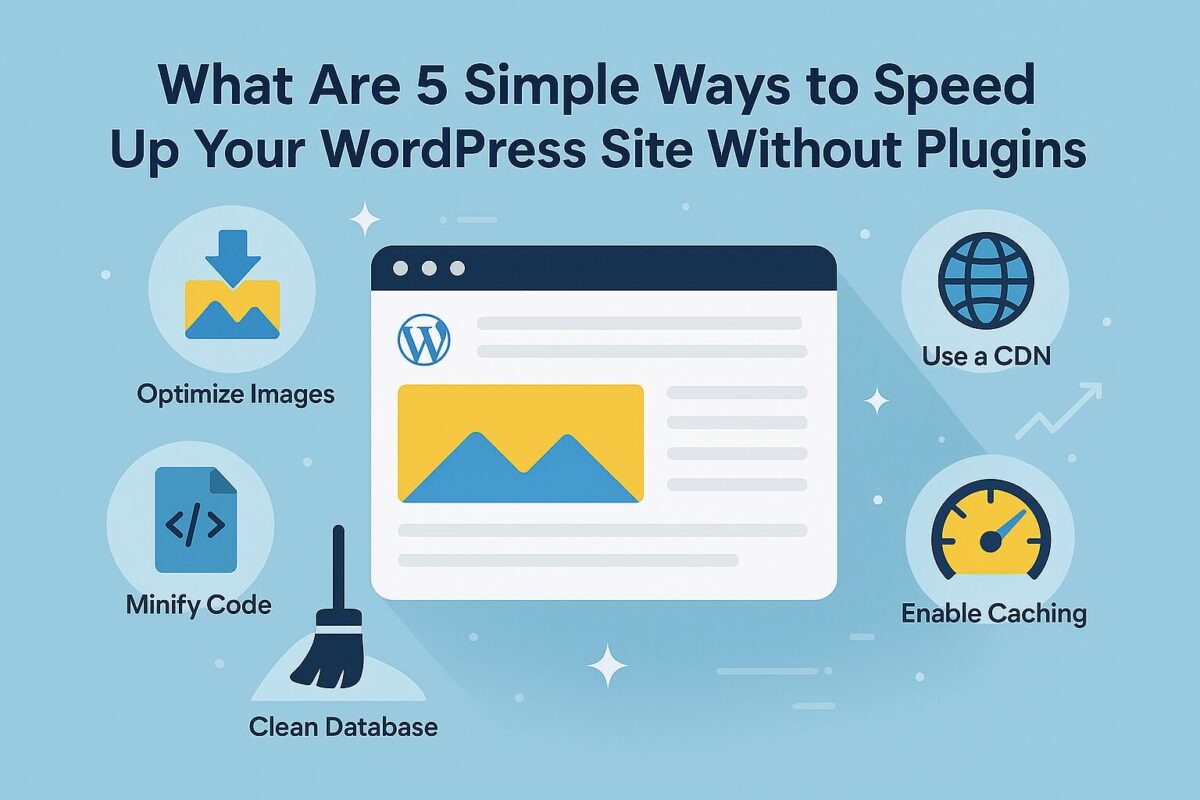What Are 5 Simple Ways to Speed Up Your WordPress Site Without Plugins

Why Speed Optimization Without Plugins Matters
While plugins can be extremely helpful, relying too heavily on them can slow down your WordPress site. Every plugin you install adds extra load — more scripts, more database queries, more resources. By implementing some manual speed optimizations, you can make your site faster, lighter, and more stable without depending on third-party tools.
1. Optimize Your Images Before Uploading
Why It’s Important
Images are often the heaviest elements on a website. Uploading large, uncompressed images drastically slows down page loading times.
How to Do It
Resize images to the maximum size needed on the site (no bigger than necessary).
Save images in efficient formats like JPEG for photos and PNG for graphics.
Use free online tools like TinyPNG or Squoosh to compress images manually before uploading them.
2. Minimize External Scripts and Fonts
Why It’s Important
Every external script (like Google Fonts, Facebook widgets, etc.) adds an extra HTTP request. This delays your site’s loading.
How to Do It
Host fonts locally if possible.
Only load the font weights you actually use (e.g., regular and bold, not 100, 200, 900).
Limit the number of third-party widgets and embed scripts.
3. Clean Up Your WordPress Theme
Why It’s Important
Heavy or poorly coded themes can load unnecessary CSS, JavaScript, and templates, making your site sluggish.
How to Do It
Choose lightweight themes optimized for speed (like Astra, GeneratePress, or a custom minimal theme).
Remove any unused features from the theme if possible (disable built-in sliders, animations, etc.).
Keep theme files clean and minimal.
4. Use Native Lazy Loading for Images
Why It’s Important
Lazy loading means images only load when they come into the user’s viewport — not immediately on page load. It significantly improves first load times.
How to Do It
Since WordPress 5.5, lazy loading is enabled by default.
Make sure your theme doesn’t override this behavior.
Check images have
loading=\"lazy\"attribute in the HTML code.
5. Optimize Your Database Regularly
Why It’s Important
Over time, your WordPress database accumulates junk: revisions, drafts, spam comments, trashed posts. This clutter slows down your site’s queries.
How to Do It
Manually delete old revisions from posts.
Clean up the spam and trash folders.
Use phpMyAdmin to optimize tables manually (or carefully with simple SQL commands).
Even a basic database cleanup can reduce load times by up to 20%.
Key Takeaways
Manual optimization gives you full control and keeps your site lightweight.
Focus first on images, scripts, theme optimization, lazy loading, and database health.
Plugins are useful, but speed optimization starts with good habits and careful setup.
